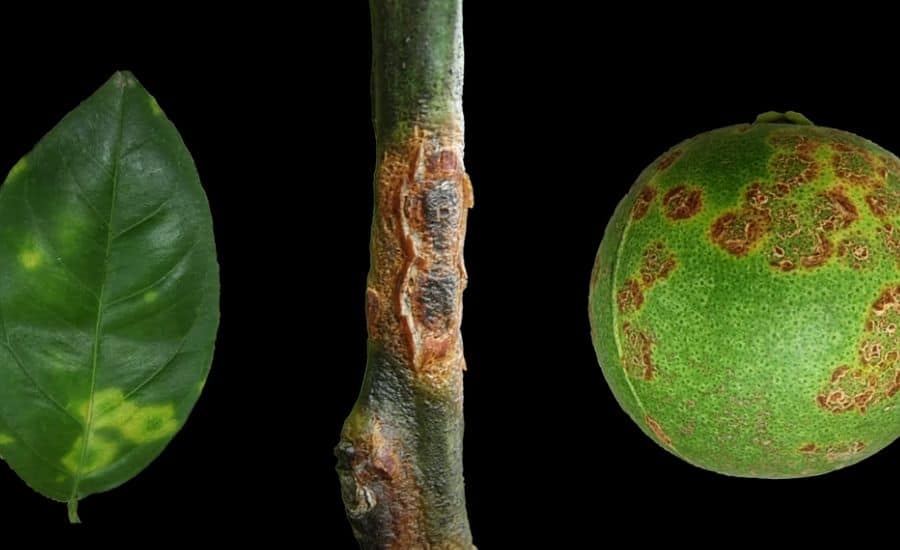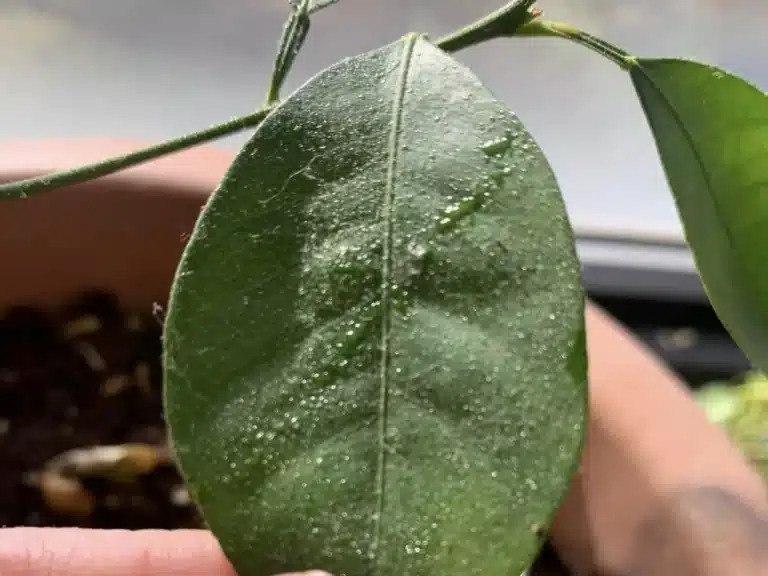Citrus Diseases – Identification + Control
Citrus trees are a popular choice among farmers and homeowners since the plants have a substantial yield value, ornamental value, ease of maintenance, and diversity of species available.
Citrus trees sometimes suffer from various diseases that range from fungal attacks to genetic disorders. However, with proper prevention and control measures, the conditions are manageable.
Are citrus plants prone to diseases?
Citrus plants are hardy plants that can tolerate different environmental conditions. However, the plants are susceptible to several diseases. Citrus plants are highly vulnerable to several diseases transmitted by insects, bacteria, and fungi.

Some vulnerable areas include the trees’ fruits, leaves, flowers, and roots. It’s crucial to engage in prevention measures to reduce the impact of diseases on your plants.
Common Citrus Diseases
Citrus plants suffer from different diseases ranging from Citrus greening (which affects fruits) to root rot, mold, etc. Bacteria and fungi are significant contributors to citrus diseases, which can cause damage to roots, leaves, and fruits.
Maintaining proper identification and control methods remains a valuable strategy when dealing with common citrus diseases. It is easy for the grower to identify the cause of each ailment and how to treat and control it as each condition presents unique symptoms and characteristics.
Here are a few common diseases that primarily affect citrus plants
Sooty Mold
Sooty mold (Capnodium citri) is a fungal infection that affects different citrus plant species including, oranges, lemons, limes, mandarins, etc. The sooty mold looks like a dark black stain covering much of the plant. Capnodium citri are visible as dark smudges appearing more often on the leaves, fruits, and stalks of affected vegetation, irrespective of the plant size and age.

Aphids, whiteflies, and other sap-sucking insects are primary vectors for spreading the sooty mold fungi among citrus trees. The mold grows from honeydew (a sugar-rich liquid that forms after pests extract sap from the plant).
Aphids attack sap-rich parts of the plant (such as the fruits and foliage). An infestation of sap-sucking pests on citrus trees can cause significant tissue damage and a reduction of the ability to ward off infections and fungal attacks.
The gummy sugary solution makes for an ideal source of nutrition for fungi spores that rely on the glucose-rich extract to germinate, mature, and spread to other parts of the plant.
Checking your citrus plant for sooty mold is easy
- You have dark-colored/sooty smudges on the insides and outsides of your leaves.
- Stunted growth
- Reduced fruit size and yield
- Leaf drop (for severe cases)
Sooty mold does not actively harm the plant. Instead, the fungi inhibit a tree’s ability to photosynthesize when the fungi cover large sections of a plant’s leaves and make it difficult for the plant to access enough sunlight exposure.
The fungi can quickly spread to other plants and cause an eyesore for ornamental plants and reduced yield for agricultural citrus trees.
One way to deal with sooty mold is to protect your citrus from aphids and other bugs that suck sap and secrete honeydew. Small insects are the primary vectors for the disease. By controlling the spread of most of these pests, you can also protect your trees from fungi attacks.
You can use organic prevention measures on your citrus trees such as neem oil or synthetic insecticides to control the spread of pests. Neem oil also acts as an antifungal agent which inhibits the germination and growth of fungi.
Anthracnose
Anthracnose Colletotrichum gloeosporioides (sexual form: Glomerella cingulata) is a destructive fungal disease that affects different plant species from citrus, mangoes, bananas, avocados, etc. The disease mainly attacks young plants and fruits, especially during de-greening.
Injured citrus trees are more susceptible to an anthracnose infection considering the fungus’ preference for dead tissue. The fungus affects a host’s leaves, stems, twigs, and fruits. It causes black-brown spots to appear over the afflicted areas. Leaves may exhibit signs of sunken lesions (sometimes with a raised rim) and the appearance of a purple-colored margin on the leaf’s surface.
The fungus can also attack your fruit, which causes large dark spots to appear on the outside of your fruit. Citrus fruits also suffer damage within. You might notice brown or black streaks as the fungi cause internal decay. It’s also worth noting that the fungi are more likely to attack injured fruits, either by sunburn, chemicals, or animal damage.
Under humid conditions, anthracnose produces pink/salmon-colored spores that could spread to nearby plants (and fruits) when water drips from the upper canopy to the lower sections of your plant. The fungi can also attach themselves to lenticels (and other small openings within your plant).
You can opt for an integrated method to counter an anthracnose infection on your citrus trees. Start by removing and destroying the affected leaves, stems, and fruits to prevent the further spread of the fungi among your plants. Biofungicides such as Bacillus subtilis and Bacillus amyloliquefaciens can also be an effective control method when introduced under the right conditions.
Hot water treatments destroy fungi and other destructive pathogens affecting your plants. The technique effectively removes fungal residue, preventing it from spreading to other plants. Wash the affected area, including fruits, with hot water (48-50℃) for about 20 minutes on each wash until the plant remains residue-free. You can also opt for chemical treatments by spraying azoxystrobin and chlorothalonil-rich fungicides over the affected areas.
You can also take several steps to ensure that the disease does not affect your plants. Some of the measures to consider include planting resistant citrus tree varieties, providing good drainage, regular pruning, proper spacing of trees, weed control, and removing dead leaves/fallen fruits from the growing surface. You need to also adhere to the specific rainfall requirements as excessive humidity can support fungi blooms.
Bacterial blast
Bacterial blast (Pseudomonas syringae) is a bacterial infection that affects citrus trees growing under cool and wet conditions. Sometimes, overwatering your lemon and citrus trees in general can lead to bacterial blast. The disease is more prevalent during the winter and spring seasons, where the weather conditions favor the spread of the bacteria.
The bacterial blast causes citrus leaves to curl, wilt, and dry. You might start to notice an appearance of dark-colored, watery lesions on a leaf’s petiole that causes the leaves to turn yellow, wilt, and dry out. Afflicted leaves may remain attached to the plant for several days as the bacteria encircles the petioles. Young leaves and stalks are vulnerable to bacterial blast infections as the bacteria are more likely to attack newer foliage growth over older, more resistant foliage.
Although rare, the bacterial blast can reach the fruits where it forms small black spots that appear on the citrus fruit skin. Sap feeding insects contribute to bacterial growth and spread by creating holes in sensitive plant tissues.
You can opt for several treatment techniques to counter bacterial blast infections on citrus trees. Some of the best options to consider include using fungicides. Copper sprays provide active protection against bacterial attacks when applied before the onset of the rainy season.
It’s a good idea to prune new growth during fall as a prevention measure against bacterial blast attacks on your citrus plants. One can also limit excessive use of nitrogen-rich fertilizers during winter, which causes increased foliage without solid tissue. Instead, use a mixture of calcium and other micronutrients that promote a hardy tissue. You should also remove and destroy affected sections of your plant to prevent the disease from spreading to other parts of the plant.
Chimera
Mutations in the plant’s DNA lead to genetic chimeras, which affect its leaves and fruits. Farmers might sometimes mistake it for Huanglongbing as the two exhibit similar symptoms. Chimeras can affect different citrus tree species such as lemons, oranges, etc.
A plant’s leaves and fruits can help you identify potential chimera cases. The leaves of affected plants appear variegated, lose their original shape, and might even exhibit a color change from green to white. In some cases, buds form close to each other on different tree sections and later fan out to create the appearance of a witch’s broom.
Chimeras appear in the fruit as well. You might notice a change in physical appearance, color differences, or the appearance of green strips along with affected fruits. It is rare for Chimeras to harm plants, although they might lose their ornamental or fruit value due to poorly shaped sections.
Botrytis Rot
Botrytis rot/blight (gray mold) is a common fungal infection caused by Botrytis cinerea. The fungus causes flowers, leaves, and other sensitive parts of your plant to appear brown, old, discolored, and exhibit symptoms of poor health.
Young citrus leaf buds and flowers are vulnerable to gray mold attacks. The fungus causes flowers to wilt, discolor and fall off. You might also notice spotting on the petals; Stricken flowers may fail to open, appear faded, and turn brown initially with the inside petals. Young leaves exhibit blotches and produce gray spores, and in case of severe infections, the leaves may wilt, dieback and fall. Botrytis blight also affects fruits causing them to rot and fall.
Adhering to proper growing and sanitation can help you control the spread of botrytis rot among your citrus trees. The fungi prefer humid conditions, so it’s imperative to allow for adequate sunlight, aeration, and nutrition to reach your plants to protect them against the ailment.
Remember to prune and destroy affected sections regularly to control the spread of the disease. You can also use recommended fungicides (including neem oil) to counter the fungal infestation among your plants.
Armillaria Root Rot
Armillaria root rot (bootlace fungus/honey toadstool) is a fungal infection that affects numerous fruit tree species, such as citrus. Several Armillaria species cause the disease, including Armillaria mellea and Armillaria luteobubalina.
The fungi affect the roots, stem, and leaves resulting in weak support structures. The leaves of the citrus tree begin to turn yellow, wilt, and dry. You might also notice indicators of stunted growth, root rot, and eventual tree death. The fungus also appears as honey-colored toadstools at the base of infected trees.
In most cases, watering lemon trees and other citrus trees incorrectly or with too much water leads to root rot.
Armillaria root rot can cause devastating effects on citrus trees regardless of age and size. Armillaria fungi can live off dead trees for a considerable period of time, making it difficult for you to eliminate them completely, especially after clearing sections of your farm/garden.
Effective control measures include removing and destroying affected plants, maintaining ideal soil drainage, creating root barriers such as trenches to prevent the fungi from spreading to other plants, chemical control, and using bio fungicides (such as Trichoderma) to control the fungus.
Other common citrus plant diseases include:
- Phytophthora gummosis
- Huanglongbing (Citrus Greening)
- Powdery Mildew
- Citrus Tristeza






![4 Types of Lime Trees [Varieties, Pictures + Identification]](https://gardenine.com/wp-content/uploads/2020/09/Types-of-Lime-Trees-Key-Limes-fruit.jpg)